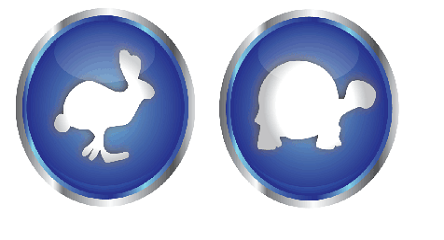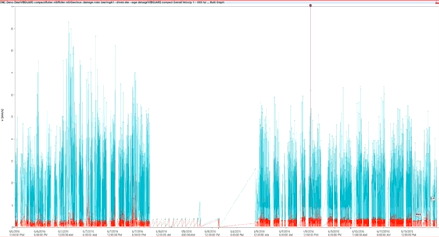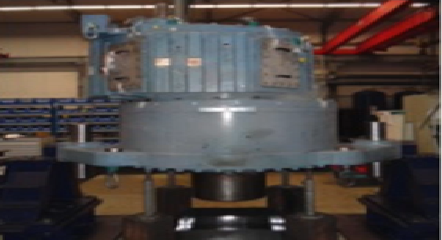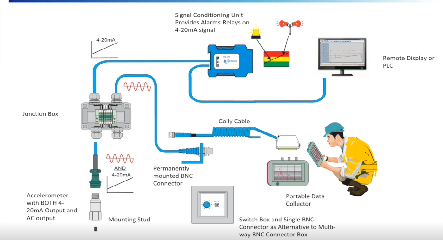After remotely monitoring several thousand wind turbines over the past 18 years, most of the wind turbine faults detected and diagnosed by the Brüel & Kjær Vibro Surveillance Centres have been related to the drive train. In this article, we give a case story where the faults were detected and diagnosed in an entirely different but important component; the yaw bearing system. It is this system that bears the enormous static and dynamic loads of the nacelle and blades, and allows the nacelle to align itself into the wind.
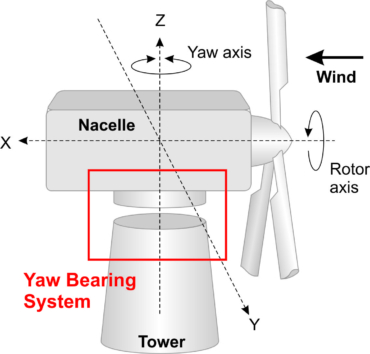
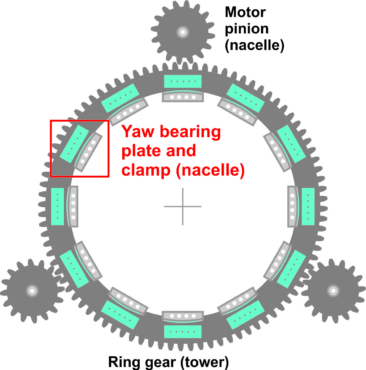
Figure 1. The yaw bearing system on a wind turbine (left) aligns the blades to the wind. It consists of the ring gear, yaw motor and the yaw bearing clamp assemblies (right, looking down from the nacelle).
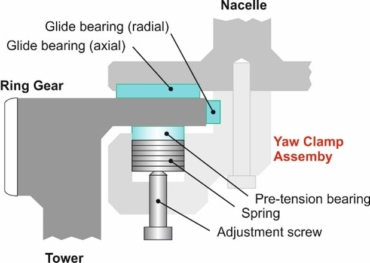
Figure 2. Cross-section of the yaw clamp assembly on the ring gear.
Observations
The monitoring system configuration for detecting the faults is shown in Figure 3.
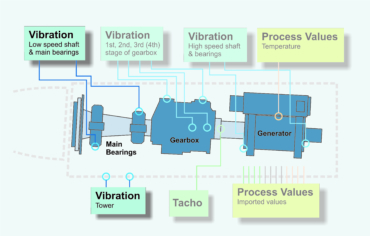
Figure 3. Typical monitoring strategy for a wind turbine like the one in this case story. The accelerometers located on the tower and the main bearing detected the yaw bearing system fault.
The vibration descriptors of the signal from the accelerometers located on the main bearing (not shown) and on the tower (Figure 4) for a wind turbine exceeded the alert limits in February. The overall RMS vibration signal, not shown, remained within acceptable limits. There were no faults found in the main bearing or blades, so the spring packs on the yaw clamp assemblies were replaced and the wind turbine put back into operation in May, where the vibration levels returned to normal. The vibration increased again more dramatically in September.

Figure 4. Bandpass acceleration vibration descriptors from the tower accelerometers, both before and after repair.
Interpretation
The fault detected appeared to be unique. The time signals for the wind turbine proved to be ideal for the initial analysis.
At both times, in February and September, there appeared to be a random impact seen in the time signal from the accelerometers on the tower (Figure 5) and main bearing (not shown). Because of the randomness of the impacts, it was initially difficult to pinpoint the exact cause, as the problem could be related to the blades, main bearing or the yaw bearing system. No problems were found in either the blades or the main bearing, so the yaw bearing system was suspect. The spring packs for the yaw bearing clamp assemblies were replaced in May and the high vibrations disappeared. The high vibrations returned again in September unexpectedly. Again, the yaw bearing system is suspect.

Figure 5. A vibration impact signal is visible, which appears random.
Advice/action
Both faults were a unique occurrence for the wind park. A medium severity level was initially assigned to the first fault because it was present for some time and it never exceeded the danger limits. A higher severity was assigned to the second occurrence of the fault, partly because it was more dramatic, and because it was the second time the same fault symptoms occurred. In both cases the fault development was carefully followed.
Feedback after service
When the wind turbine was shut down for the first time, the main bearing and blades were checked and found to be OK, so attention was given to the yaw bearing system. It was decided to change all the pre-tensioning spring packs in the system. When the wind turbine was re-started, the vibration levels returned to normal (Figure 4, top). However, after only three and a half months operation, the same fault symptoms occurred again, but more dramatically. The yaw bearing system was disassembled again, and this time it was observed that many of the axial gliding bearing plates were damaged. These were re-machined, the spring packs changed a second time and the wind turbine was put back into normal operation. It is believed that the yaw plates were damaged due to a rocking motion of the nacelle on the tower, caused by the loose yaw bearings. The random motion of the rocking is believed to be due to the variable wind conditions and loading. There was no imbalance in the blades that would “tie in” the rocking motion of the nacelle to the rotation of the blades. Over an extended period of time with loose bearings, the bearing plates were damaged by the continuous impacts to a point where the new pre-tensioning springs weren’t capable of compensating for this.
Conclusion
This case story and a couple of others demonstrate that there are critical components in the wind turbine other than the drive train that needs to be effectively monitored, like the yaw bearing system. It demonstrates that there can be more than one problem occurring at the same time. If the loose yaw plate bearings were not monitored and serviced in time, a catastrophic failure could occur that would render the yaw system non-functional, thus requiring a complete shutdown or operating at only partial power for a period of time.







